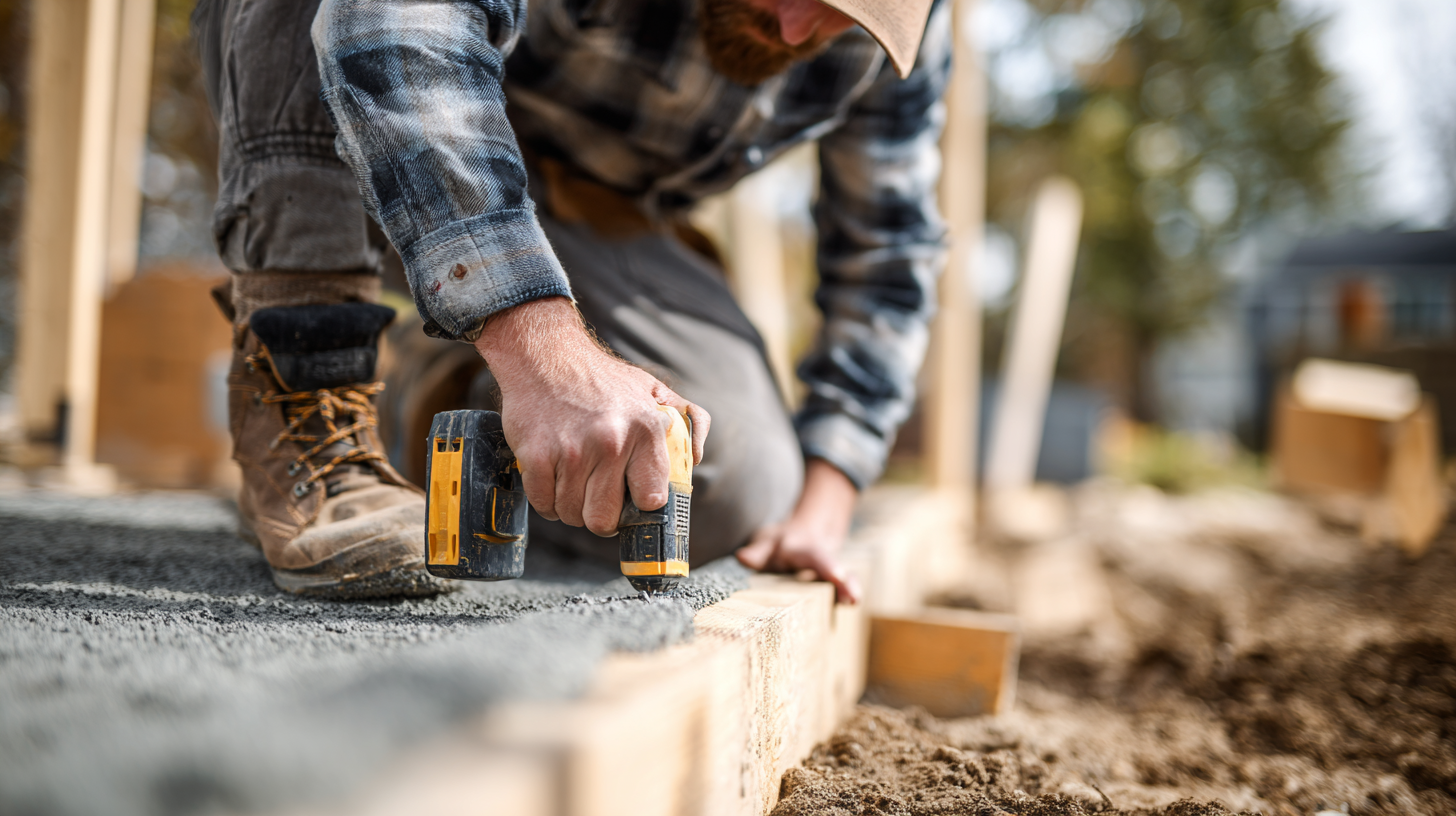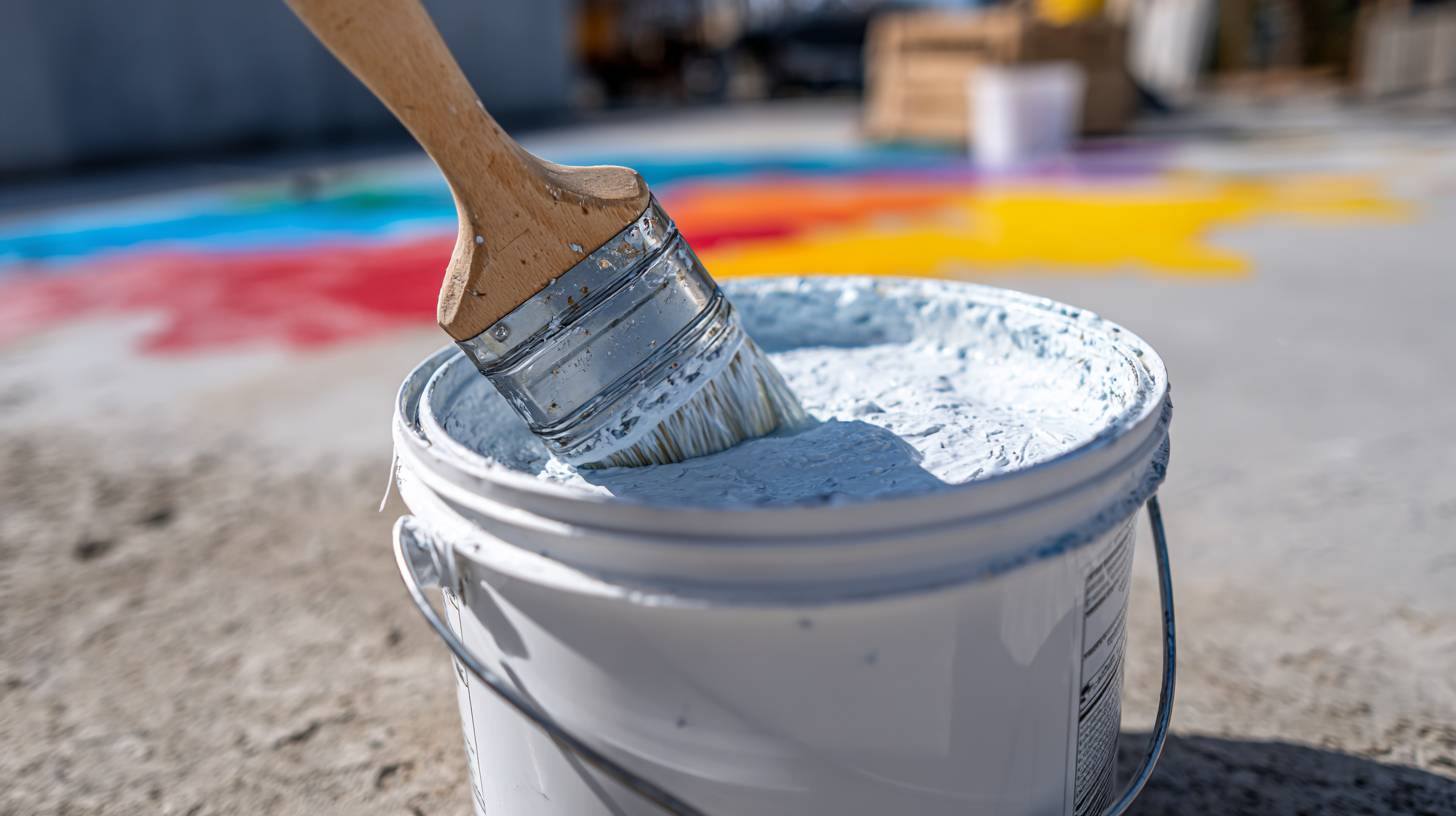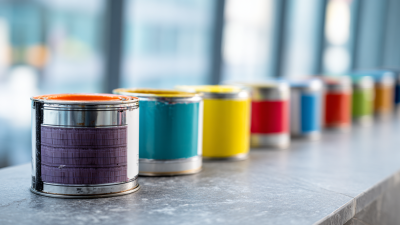Inquiry
Form loading...
When embarking on outdoor projects, selecting the right Outdoor Construction Adhesive becomes a critical factor in ensuring durability and performance. According to the latest market analysis by Grand View Research, the global construction adhesive market is projected to reach USD 22.9 billion by 2025, with a significant surge in demand for durable and weather-resistant adhesives.
 Furthermore, the construction industry is witnessing a growing emphasis on sustainability, as noted in reports by ResearchAndMarkets, which indicates a 25% increase in eco-friendly adhesive products. These trends underline the importance of understanding the various types of outdoor adhesives available and their specific applications. With the right choice, not only can professionals enhance the longevity of their projects, but they can also contribute to a more sustainable building practice.
Furthermore, the construction industry is witnessing a growing emphasis on sustainability, as noted in reports by ResearchAndMarkets, which indicates a 25% increase in eco-friendly adhesive products. These trends underline the importance of understanding the various types of outdoor adhesives available and their specific applications. With the right choice, not only can professionals enhance the longevity of their projects, but they can also contribute to a more sustainable building practice.
In this article, we will explore five essential tips for making an informed decision when choosing Outdoor Construction Adhesive, ensuring that your outdoor constructions stand the test of time.
When it comes to outdoor construction projects, selecting the right adhesive is crucial for ensuring a durable and long-lasting bond. Outdoor construction adhesives come in various types, each designed for specific applications and environmental conditions. The most common types include polyurethane adhesives, silicone adhesives, and solvent-based adhesives. Polyurethane adhesives are known for their exceptional strength and flexibility, making them suitable for bonding wood, metal, and concrete. Silicone adhesives, on the other hand, offer excellent water resistance and are ideal for areas exposed to moisture. Solvent-based adhesives provide strong initial tack, making them useful for quick fixes in a variety of materials.
Tip 1: Before making a decision, assess the materials you’ll be working with and their exposure to the elements. Understanding this will help determine the right type of adhesive for your specific needs.
Tip 2: Always check the temperature range and curing time of the adhesive. Some adhesives may require specific conditions to form a strong bond, which can be a critical factor in outdoor applications.
By familiarizing yourself with these different types of adhesives, you can make a more informed choice that aligns with your project requirements and ensures lasting results.
This bar chart illustrates the importance of various factors to consider when selecting outdoor construction adhesives. Each factor is rated on a scale from 1 to 10 based on relevance for outdoor applications.
 When selecting an outdoor construction adhesive, it’s crucial to assess environmental factors that can impact performance.
Temperature fluctuations, humidity levels, and exposure to UV radiation can significantly influence the adhesive's bond strength and longevity.
According to a report by the Adhesives and Sealants Industry (ASI), approximately 30% of adhesive failures in outdoor applications are attributed to environmental conditions.
Understanding these factors allows builders to make informed choices that enhance durability and reliability.
When selecting an outdoor construction adhesive, it’s crucial to assess environmental factors that can impact performance.
Temperature fluctuations, humidity levels, and exposure to UV radiation can significantly influence the adhesive's bond strength and longevity.
According to a report by the Adhesives and Sealants Industry (ASI), approximately 30% of adhesive failures in outdoor applications are attributed to environmental conditions.
Understanding these factors allows builders to make informed choices that enhance durability and reliability.
Tip 1: Always check the product specifications for temperature resistance. Some adhesives are optimized for specific temperature ranges, while others can perform well across a broader spectrum.
Additionally, humidity can affect both the drying time and the bonding capability of adhesives.
A study by the American Institute of Physics found that adhesives exposed to high humidity environments exhibit a decrease in tensile strength by up to 20%.
Tip 2: Opt for moisture-resistant adhesives when working in areas prone to dampness or high humidity.
This ensures the integrity of the bond over time, especially in regions with fluctuating weather patterns.
By taking environmental conditions into account and choosing the right adhesive, you can enhance your construction project's success and sustainability.
 When selecting an outdoor construction adhesive, evaluating adhesive strength and durability ratings is crucial. The strength of an adhesive refers to its ability to bond materials firmly, which is essential for outdoor applications subjected to varying weather conditions and stress.
Opt for adhesives that have been tested for tensile and shear strength, as these metrics give a clear indication of how well the adhesive will perform under pressure. Look for products that specify their strength ratings to ensure they can handle the demands of your particular project.
When selecting an outdoor construction adhesive, evaluating adhesive strength and durability ratings is crucial. The strength of an adhesive refers to its ability to bond materials firmly, which is essential for outdoor applications subjected to varying weather conditions and stress.
Opt for adhesives that have been tested for tensile and shear strength, as these metrics give a clear indication of how well the adhesive will perform under pressure. Look for products that specify their strength ratings to ensure they can handle the demands of your particular project.
Durability ratings provide insight into how the adhesive will withstand environmental factors such as moisture, temperature fluctuations, and UV exposure. An adhesive that excels in durability will maintain its bond over time, even under adverse conditions. Check for performance indicators such as resistance to water and extreme temperatures, as well as protection against chemical exposure. By prioritizing these ratings, you can select an adhesive that not only bonds effectively but also lasts, reducing the need for repairs or replacements in the future.
When selecting an outdoor construction adhesive, understanding application methods is crucial for achieving optimal bonding. Different adhesives are designed for specific application techniques, such as caulking, spraying, or troweling. For instance, those using a spray adhesive may benefit from its quick drying time and ease of use, especially for larger surfaces. On the other hand, caulking adhesives can offer better control in tight spaces, making them ideal for detailed work or intricate designs.
Another aspect to consider is the ambient conditions during application. Some adhesives perform better in certain temperatures or humidity levels, and proper application can significantly affect their performance. For example, if an adhesive is intended for outdoor use, ensure it can withstand exposure to the elements both during and after the application process. Knowing whether an adhesive is formulated for wet or dry surfaces can also determine its effectiveness in different outdoor scenarios. Ultimately, understanding these methods ensures that you select an adhesive that not only meets your project needs but also provides lasting results.
When choosing the right outdoor construction adhesive, it is crucial to consider manufacturer recommendations and aggregate user experiences. Manufacturers often provide detailed guidelines on how their products perform in various environmental conditions, which can be invaluable when selecting an adhesive for a specific project. This includes recommendations on surface preparation, curing times, and suitable substrates, which can significantly impact the adhesive's effectiveness.
User experiences also play a pivotal role in understanding the practical applications of adhesives. Reviews can shed light on how these products perform in real-world scenarios, revealing both strengths and weaknesses. For instance, some users may highlight the ease of application or exceptional bonding strength, while others might share concerns about durability under specific weather conditions. By synthesizing both manufacturer insights and user feedback, individuals can make informed decisions that maximize performance and longevity for their outdoor projects.
| Tip | Description | Recommended Material | User Experience Rating |
|---|---|---|---|
| 1. Determine Your Surface Type | Ensure the adhesive is suitable for the material you are bonding. | Wood, Concrete | 4.5/5 |
| 2. Consider Temperature Resistance | Verify that the adhesive can withstand temperature fluctuations in outdoor conditions. | Polyurethane, Silicone | 4.8/5 |
| 3. Evaluate Drying Time | Choose an adhesive based on how quickly you need your project completed. | Quick-Dry Adhesives | 4.2/5 |
| 4. Check for Waterproof Features | Ensure the adhesive is waterproof for outdoor applications. | Waterproof Adhesives | 4.7/5 |
| 5. Read User Reviews | Gather insights from other users regarding their experiences with the product. | General User Feedback | 4.6/5 |






